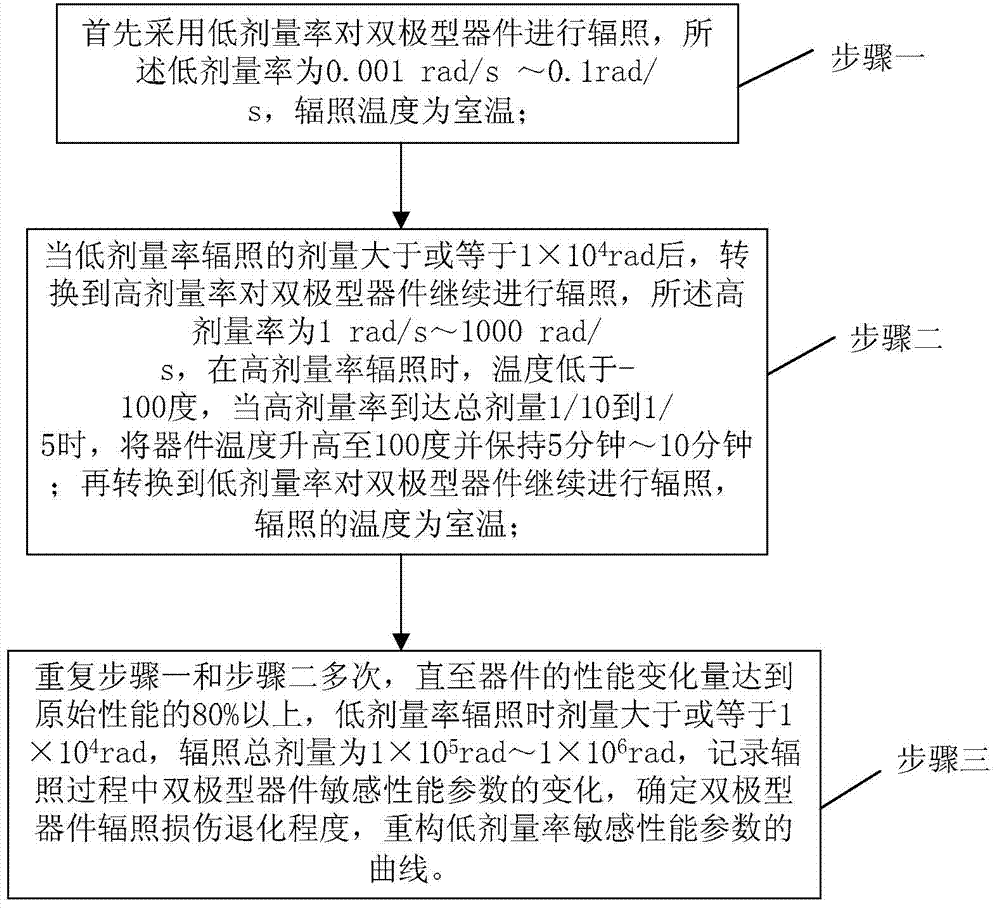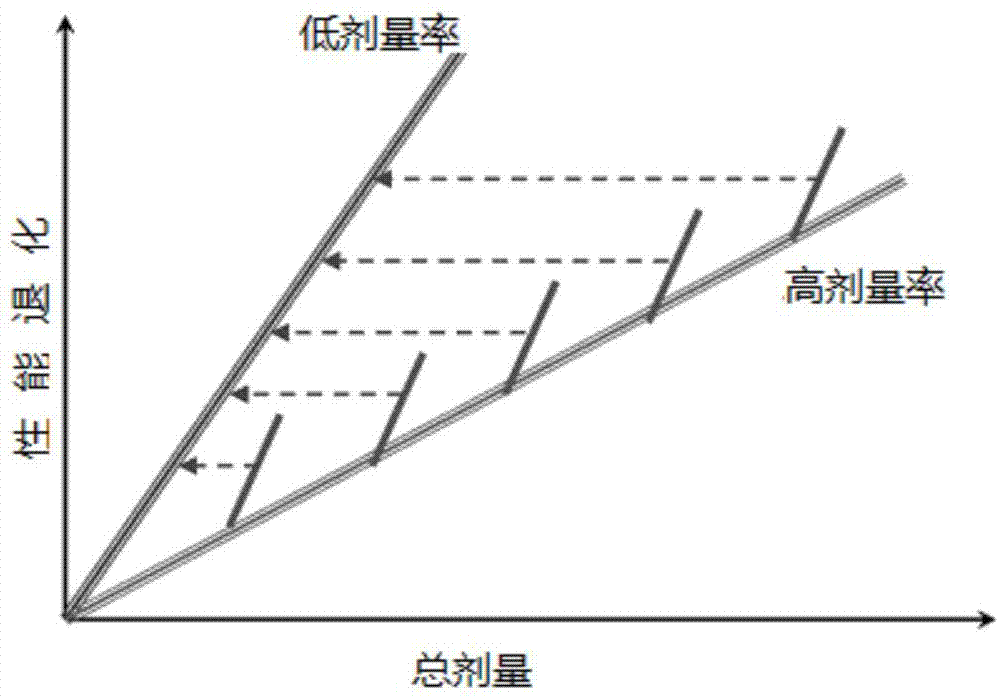Low-dosage-rate enhancement effect accelerated testing method based on temperature and dosage rate changes
A low-dose-rate, temperature-changing technology, applied in the electronic field, can solve problems such as long test time, excess base current, and current gain effects, and achieve the effects of easy operation, reduced time and cost, and simple steps
- Summary
- Abstract
- Description
- Claims
- Application Information
AI Technical Summary
Problems solved by technology
Method used
Image
Examples
specific Embodiment approach 1
[0020] Specific implementation mode one: the following combination figure 1 and image 3 Describe this embodiment, the low dose rate enhancement effect acceleration experiment method based on changing temperature and dose rate described in this embodiment, the specific steps of this method are:
[0021] Step 1: First select the bipolar device to be tested for irradiation at a low dose rate, the low dose rate is 0.001rad / s-0.1rad / s, and the irradiation temperature is -200℃~+50℃. Stop the irradiation when the cumulative dose of irradiation reaches 1 / 10 to 1 / 5 of the total dose of low dose rate irradiation, and record the performance change curve of the device;
[0022] Step 2: Select another bipolar device of the same type to be tested, and irradiate with a high dose rate, the high dose rate is 1 rad / s to 1000 rad / s, and the irradiation temperature is between 0°C and 100°C; When the performance change caused by high-dose irradiation reaches 50%-80% of the performance change de...
specific Embodiment approach 2
[0024] Specific implementation mode two: the following combination figure 2 and Figure 4 Describe this embodiment, the low dose rate enhancement effect acceleration experiment method based on changing temperature and dose rate described in this embodiment, the specific steps of this method are:
[0025] Step 1: first irradiating the bipolar device with a low dose rate of 0.001 rad / s to 0.1 rad / s, and the irradiation temperature is room temperature;
[0026] Step 2: When the dose of low dose rate radiation is greater than or equal to 1×10 4 After rad, switch to a high dose rate to continue irradiating the bipolar device. The high dose rate is 1 rad / s to 1000 rad / s. During high dose rate irradiation, the temperature is lower than -100 degrees. When the dose rate reaches 1 / 10 to 1 / 5 of the total dose, raise the temperature of the device to 100 degrees and keep it for 5 to 10 minutes; then switch to a low dose rate and continue to irradiate the bipolar device. The irradiation ...
specific Embodiment approach 3
[0028] Specific embodiment three: This embodiment further limits the accelerated experimental method of low dose rate enhancement effect based on changing temperature and dose rate described in specific embodiment one or two. In this embodiment, the irradiation source selection 60 Co gamma rays.
PUM
 Login to View More
Login to View More Abstract
Description
Claims
Application Information
 Login to View More
Login to View More - R&D
- Intellectual Property
- Life Sciences
- Materials
- Tech Scout
- Unparalleled Data Quality
- Higher Quality Content
- 60% Fewer Hallucinations
Browse by: Latest US Patents, China's latest patents, Technical Efficacy Thesaurus, Application Domain, Technology Topic, Popular Technical Reports.
© 2025 PatSnap. All rights reserved.Legal|Privacy policy|Modern Slavery Act Transparency Statement|Sitemap|About US| Contact US: help@patsnap.com



